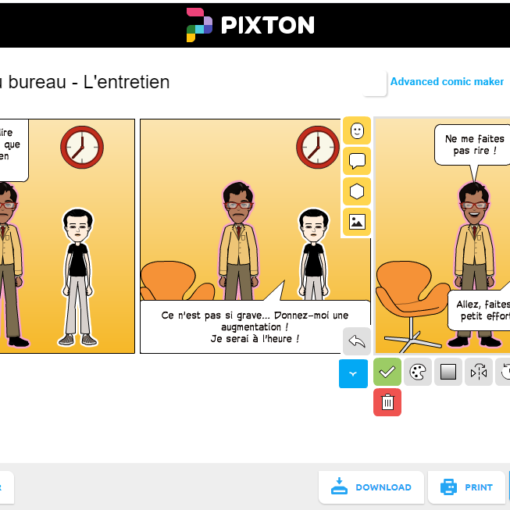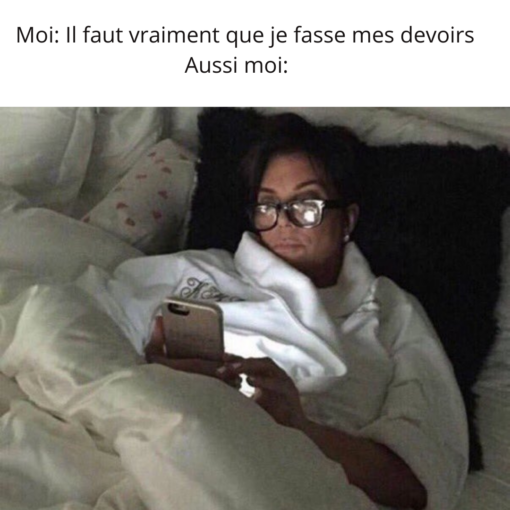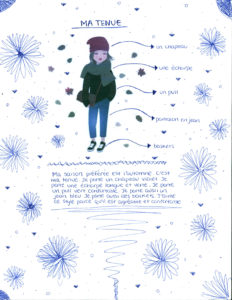
In this low-stakes exercise, students create an image that they design themselves, using a set of vocabulary words being studied. For this example, the language unit was focused on fashion, and so each student created their ideal outfit using fashion and textile words in the target language. However, this exercise could just as easily be adapted for a unit on art, food, or any other subject that lends itself to drawing and/or collage. Because of the adaptability of subject and language use involved, this exercise would work well either in a beginner or intermediate classroom.
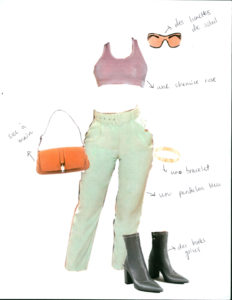
Prompt: “Allez sur le site web d’une marque de vêtements que vous aimez et regardez le site en français. Trouvez des vêtements qui vous inspirent et créez une tenue pour vous-même. Désignez-la (ou faites un collage) et écrivez le nom de chaque vêtement. Il faut avoir au moins quatre vêtements.”
“Find a clothing brand that you like and go on their website in French. Find clothes that inspire you and create an outfit for yourself. Create a drawing (or a collage) and make sure to label each article of clothing. You must have at least four articles of clothing.”
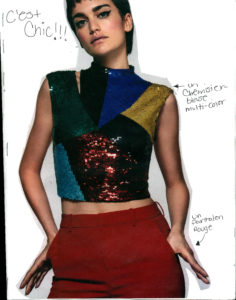
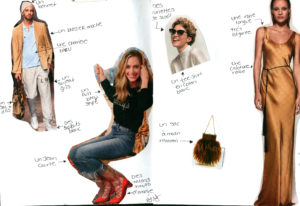
Before giving my students the assignment, I present the vocabulary in a powerpoint with many examples of different outfits, including a range of terms for colors and materials as well as articles of clothing.
As a homework assignment, giving students a simple version of the assignment allows them a creative, low-stress of using the vocabulary within an image that they create themselves. This not only gives them a tactile method of absorbing the language (through the drawing and writing and/or cutting and pasting) but a visual one as well.
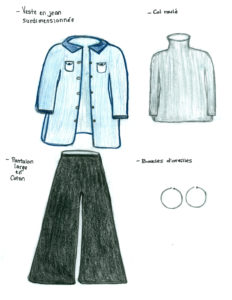
It also allows a time and space for exploration beyond the material given within the book, as they have the motivation and opportunity to look up new words in order to describe the specific elements of their design. Through exploration, the language becomes something exciting, and not merely a space of rote memorization.
As a longer-term and higher stakes assignment, a more structured writing component could be added beyond the simple labeling of the elements of the image. For example, if the image being created was for a fashion unit, the drawing could be labeled and then an additional paragraph written about the nature of the materials, where the inspiration for the image was drawn from, what specific elements the student enjoys about the outfit they created, what occasion the outfit would be appropriate for, etc.
Even as a low-stakes homework assignment due for the next class, I found that many of my students took a lot of pride in their work and created elaborate multi-page collages and intricate computer-generated and/or hand-drawn images. I’ve included some of my favorite examples (with permission) throughout the post!


